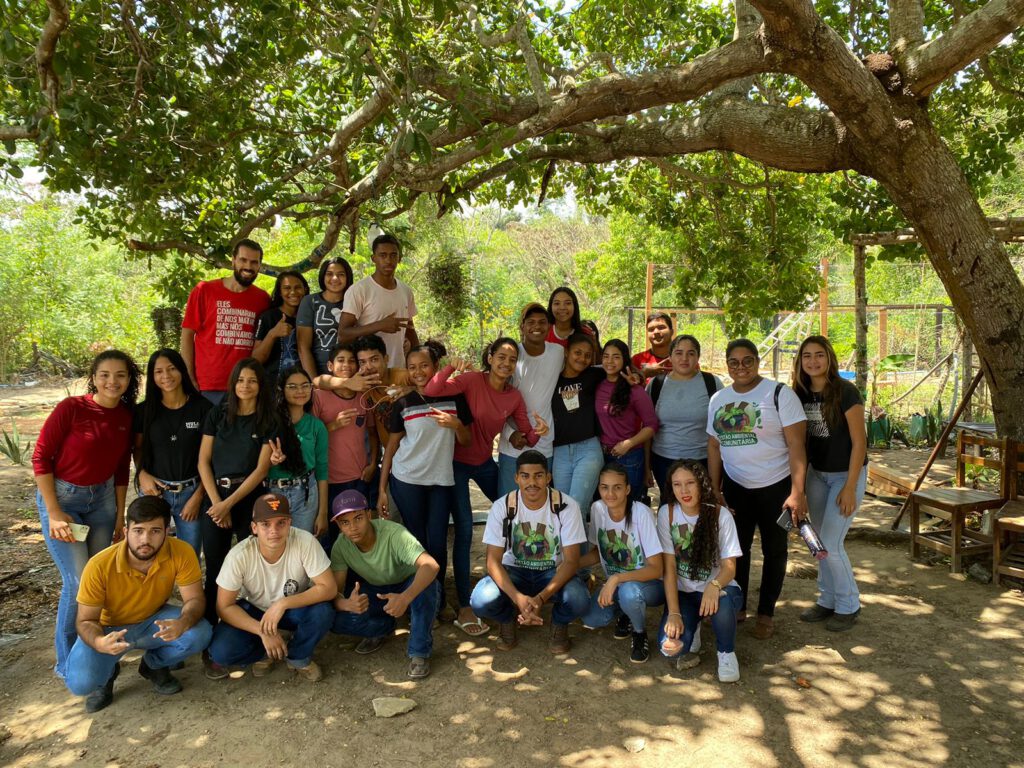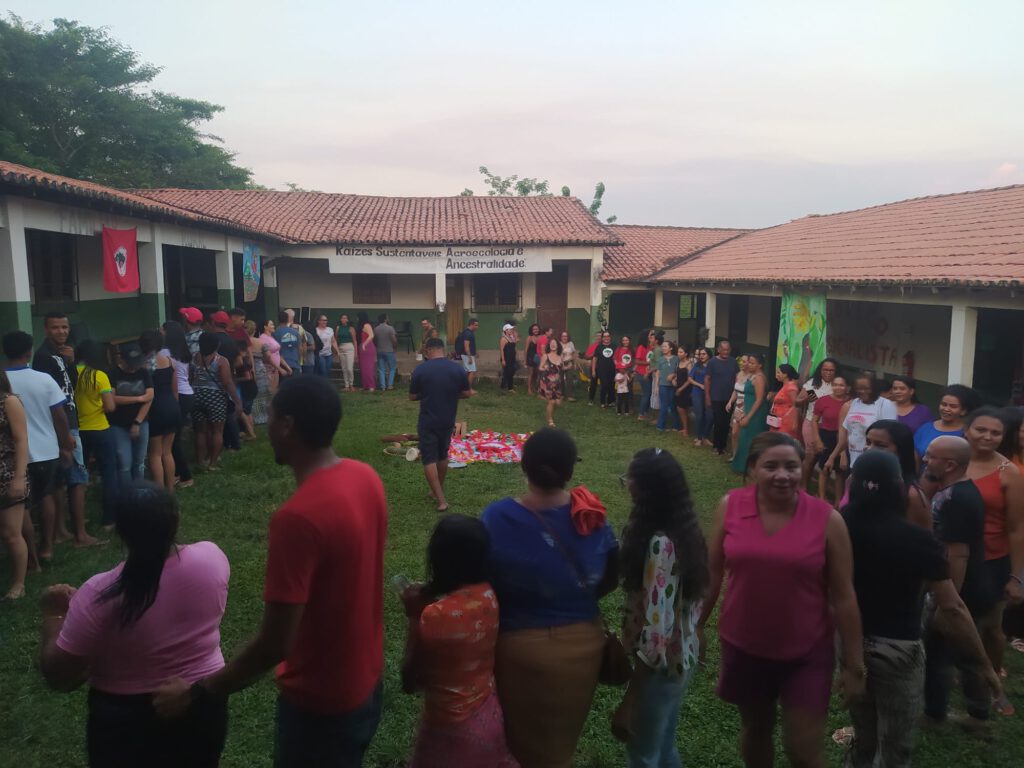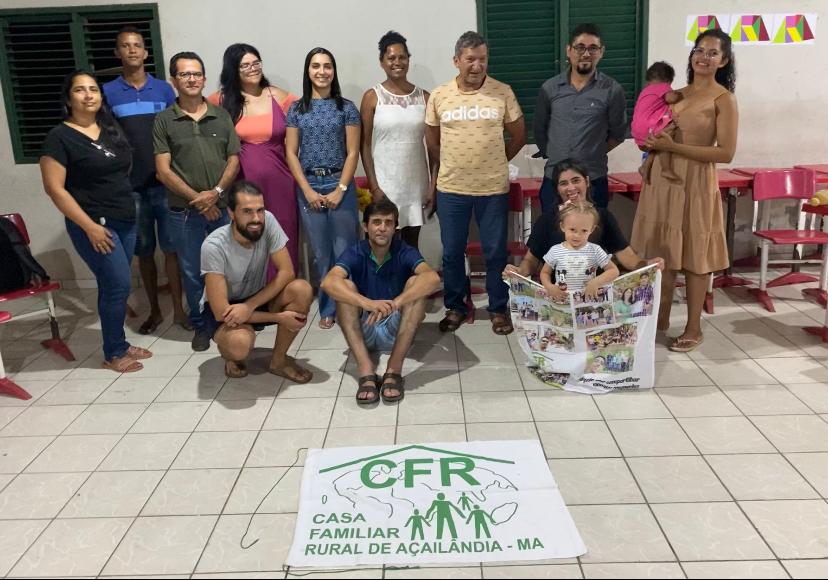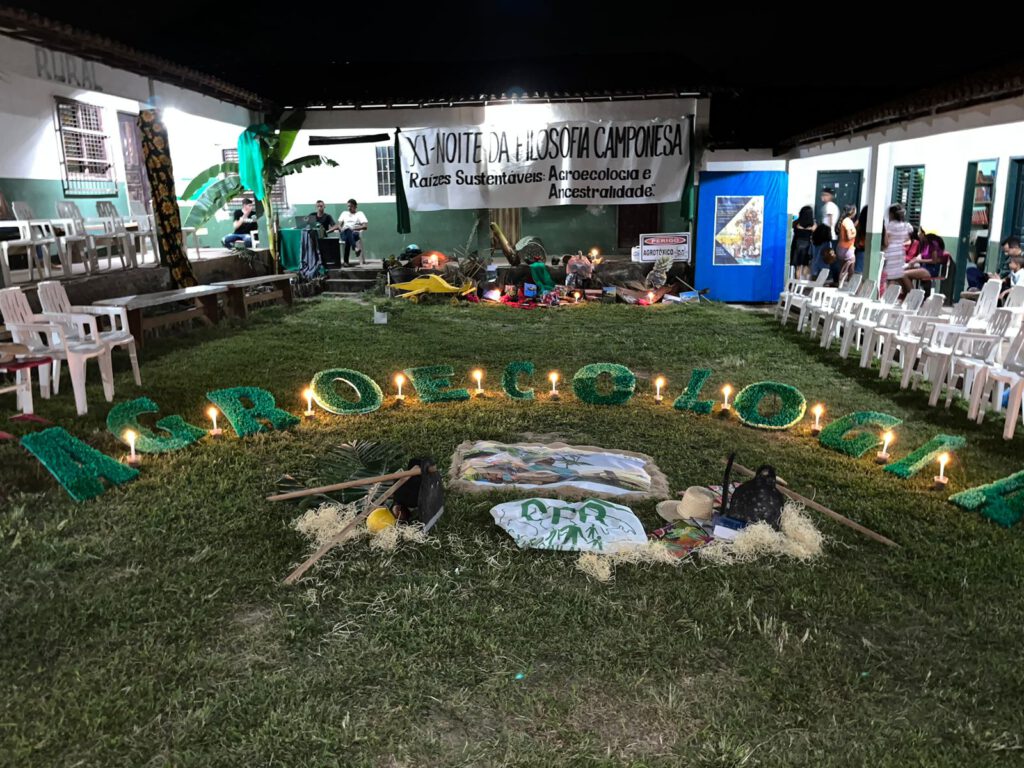Today is Monday, one of the busiest days, another week begins again at Casa Familiar Rural, the agricultural school where I am helping out. Off we go: 7:30 a.m. me and Nete, the school’s cook, start doing the week’s shopping for the 30 first-year students, 8:15 a.m. shopping done. 8.30 am I call the driver of the two buses to confirm transportation for the students, some come from very far: they leave home at 6 am, only after 3 hours by bus they arrive in town.
In the square in front of the market everyone gathers, they come from various parts of the region, and at 10 a.m. a bus picks up the boys and goes to the school.

The Rural Family House is located in the middle of a mixture of “countryside and forest.” To get there you’ll have to pass through the working-class Jardim de Aulidia neighborhood, a cluster of houses all looking the same scrolling across the hilly horizon, a sardine quarter just outside Açailandia. After passing it you will find yourself in front of a mud house, as we would say, built with biomaterials, finally surrounded by greenery.
Now you continue along the long unpaved road, on either side flow pastures as far as the eye can see in an up and down between the hills of the valley. Halfway along the road the landscape changes, on the left there is cultivation in Agroflorestry System while on the right there is an area of living forest, still intact, until, at last, in front of you is the Casa Familiar Rural.

Don’t imagine a big school like the ones we are used to; a maximum of 35 to 40 students a week study here. It’s a friendly environment, very rustic, it’s a “schoolhouse,” with dormitory spaces, two classrooms, the large dining hall with wooden tables, the library, the computer room and the lab. And then all around green spaces managed in various ways: vegetable garden, fruit garden, bee house, medicinal plants, chicken house and pigsty. All in function of study and learning.
The students in the house are young people between the ages of 15 and 19 who are doing “ensino medio,” which lasts three years and is the equivalent of our high school with an agricultural focus. These young people come from the countryside, from farming families where they are labor force as well as children, which is why the school uses what is called the Pedagogy of Alternation, since during the year they constantly alternate a week in school and a week at home, so as not to take away an important support from the work in the fields, but also because through these years of study the goal is for the boys and girls to take home new techniques and improve the family agriculture by developing it from an Agroecological perspective.

A special feature is that there are 10 hours of lessons each day: basic subject and technical subjects: from mathematics to animal husbandry, from bovine-culture to history. An intense program between practice and theory, a school that becomes family because of all the time spent together, and becomes home because everyone has responsibilities to keep this place clean by doing their part.
But this is not just a school like any other: it is a school that symbolizes RESISTANCE. In fact, here it is necessary to resist in order to survive what is called AGRONEGOTIUM, that is, those big producers of Soja and Eucalyptus, who with their monocultures invade, devastate and undermine the preservation of the environment, incentivizing deforestation and the use of agrotoxics through aerial dispersion. A tool that is killing in small doses communities still trying to live off the countryside and family farming.

Those who choose to come to this school choose to give a different future not only to their family but also to their community. The goal is to train these boys and girls to care for their land through innovative agricultural methodologies capable of adapting to the environment without destroying it.
Anna and Gabriele, CLM in Brazil





